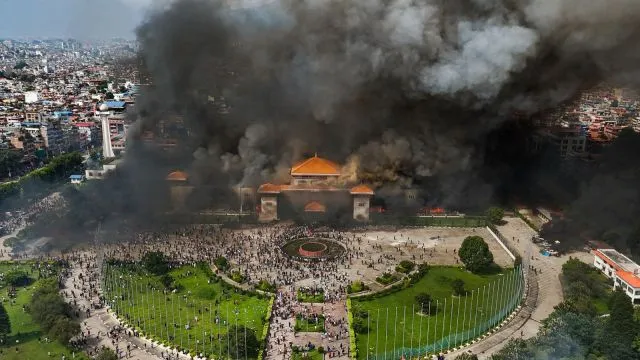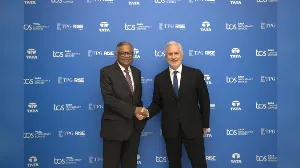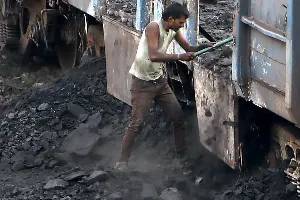Nepal protests prompt curfew as fresh Gen Z unrest erupts

Nepal has reimposed a curfew in parts of its southern Bara district after violent clashes broke out between young demonstrators and supporters of former prime minister KP Sharma Oli’s party. The renewed tension, centred around the town of Simara, marks the latest flare-up in what has become one of Nepal’s most significant youth-led protest movements.
Authorities said the curfew would remain in force until 8pm local time on Thursday. The district administration cited public safety concerns following confrontations between Gen Z protesters and cadres of the Communist Party of Nepal (Unified Marxist–Leninist), known as CPN-UML.
Growing unrest in Simara
The situation escalated on Wednesday when both groups staged rival rallies in Simara, a commercial hub near Nepal’s border with India. According to local police, scuffles erupted close to the airport, prompting officers to intervene.
A police spokesman, Abi Narayan Kafle, told AFP that the situation had stabilised by the evening and said no one had suffered serious injuries. However, reports in Nepali media said that at least 10 people, including six police officers, were hurt during Thursday’s renewed unrest.
According to news portal Khabarhub, officers fired tear gas and two warning shots into the air after protesters defied the curfew and continued to advance toward police lines. The outlet reported that stones were thrown at security personnel and that demonstrators torched items taken from a local CPN-UML office. A police post in Simara Bazaar was also set on fire.
Protesters accuse authorities of failing to act
Gen Z demonstrators returned to the streets on Thursday morning, accusing police of not arresting individuals they claim were involved in Wednesday’s violence. Two CPN-UML ward chairpersons were later detained on assault charges after complaints were filed, according to police.
Tensions rose again after reports emerged that senior CPN-UML leaders Shankar Pokharel and Mahesh Basnet had planned to travel from Kathmandu to address a rally in the district. Opponents gathered at the airport to prevent their arrival, triggering further clashes. The rally was later cancelled.
Government appeals for calm
Nepal’s prime minister, Sushila Karki, appealed for calm and urged all political groups to avoid “unwanted provocation”. She said security agencies had been directed to act with restraint while ensuring public order.
“I want to ensure the safe movement of leaders of all political parties and create a fair and fear-free environment for the elections,” she said in a statement. Elections have been scheduled for 5 March 2026 after the Karki-led interim government dissolved parliament in September.
Karki held discussions on Wednesday with representatives from more than 110 political parties. She said the country needed leadership “in the hands of a new generation”, echoing calls from youth groups for structural political reforms.
Origins of Nepal’s Gen Z movement
The current unrest follows a wave of violent protests in September that resulted in at least 76 deaths. What began as opposition to a brief ban on social media quickly evolved into a broader movement against corruption, economic stagnation and what many young Nepalis see as a lack of political accountability.
During the September clashes, government offices, courts and parliament buildings were set ablaze as frustration with long-standing political leadership reached breaking point. The unrest forced KP Sharma Oli, a four-time prime minister, to resign on 9 September. Within days, Sushila Karki — a former chief justice — was appointed interim prime minister.
Authorities have since been attempting to restore stability ahead of the 2026 national elections, but periodic clashes continue to highlight the volatility of the political situation.
Context: Political uncertainty in Nepal
Nepal, a nation of around 30 million people, has faced repeated cycles of political turmoil since the end of its civil war in 2006. Coalition governments have struggled to maintain stability, and public trust in institutions has eroded.
Analysts say the current Gen Z movement represents a new phase of political engagement, driven by a generation that has grown up amid economic hardship and high unemployment. The role of social media has also been central, helping demonstrators mobilise quickly despite temporary attempts at online restrictions.
With the latest curfew highlighting ongoing tensions, Nepal’s interim government faces increasing pressure to balance security concerns with demands for political reform. Observers say that unless underlying grievances are addressed, the protests could continue well into the run-up to the 2026 elections.

Nitish Kumar Sworn In as Bihar Chief Minister for Tenth Term

Narendra Modi to Attend G20 Summit in South Africa on Key Issues

Tata Consultancy Services and TPG Establish AI Data Centre Venture

India's Core Industries Growth Remains Flat in October 2025





